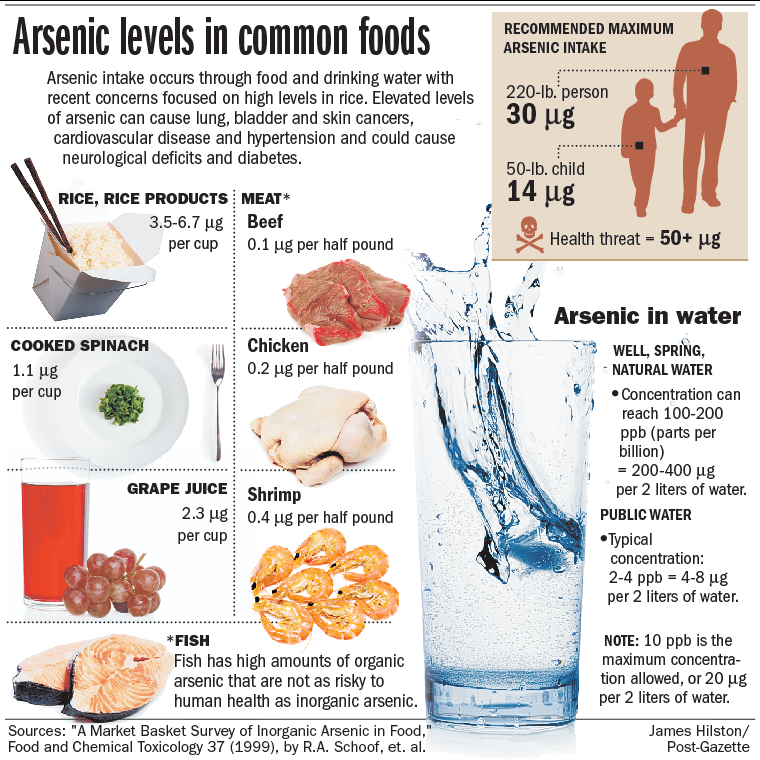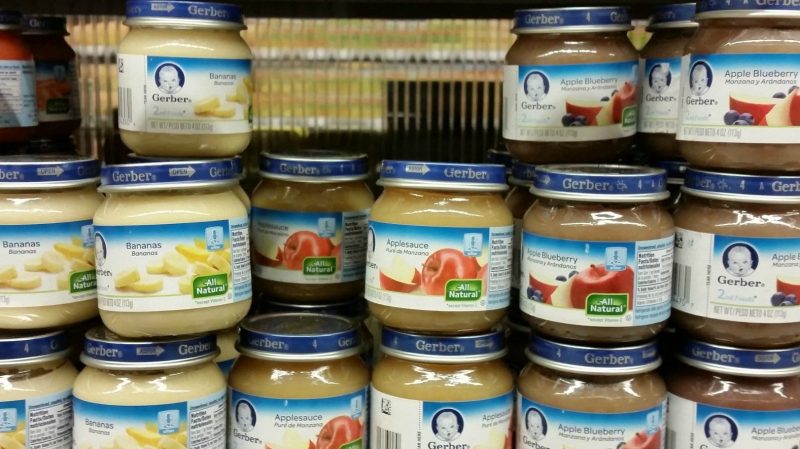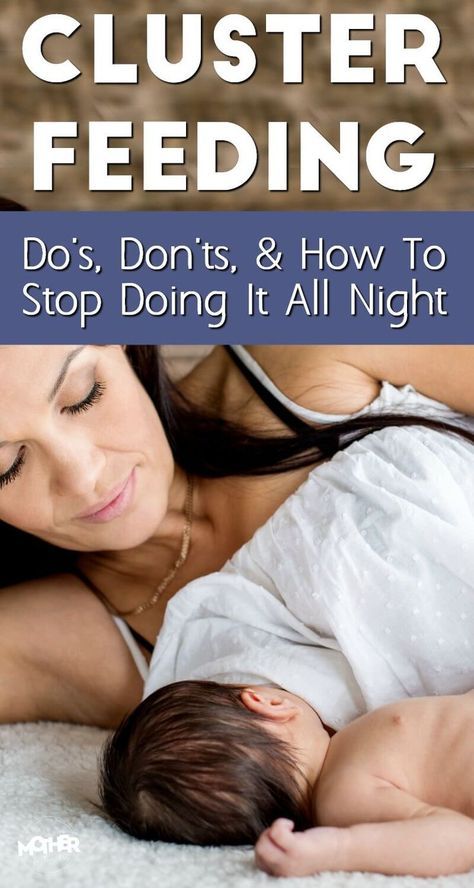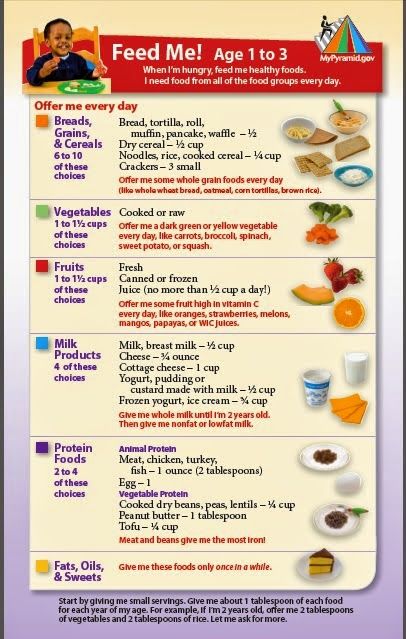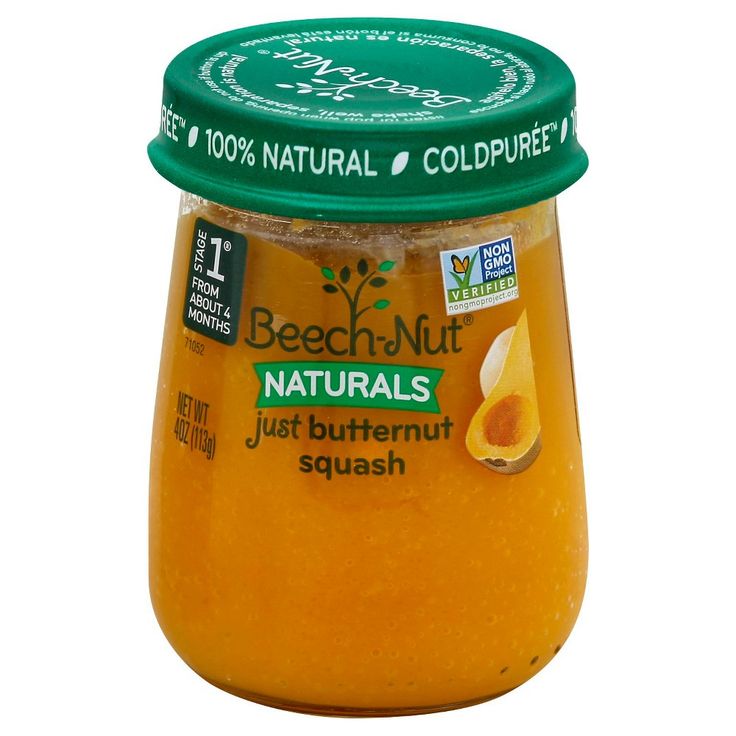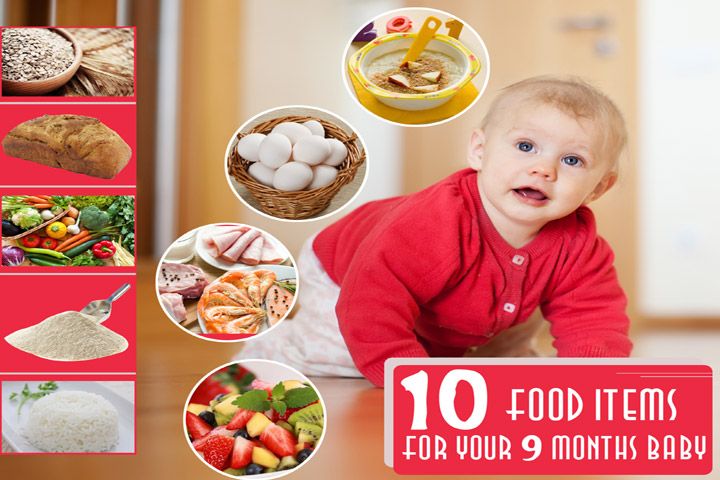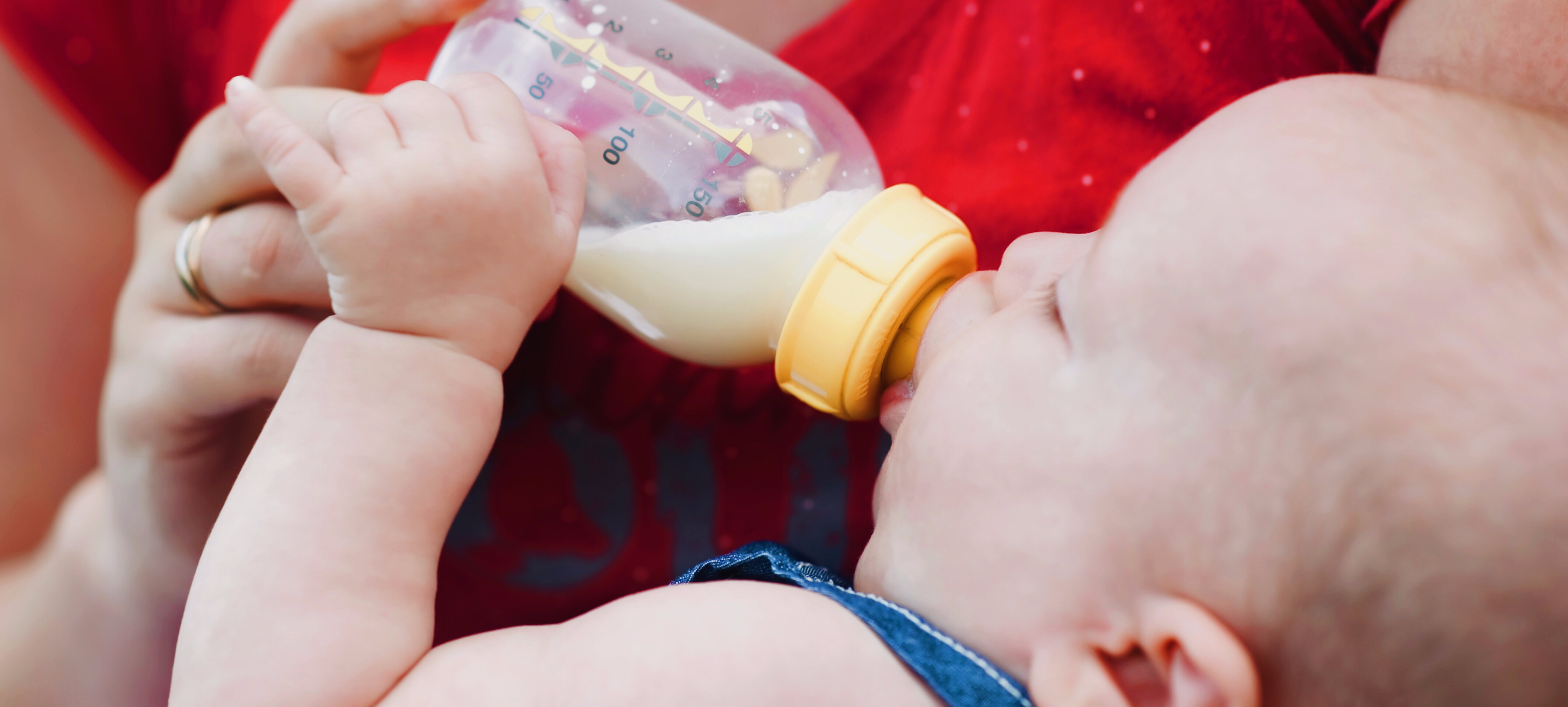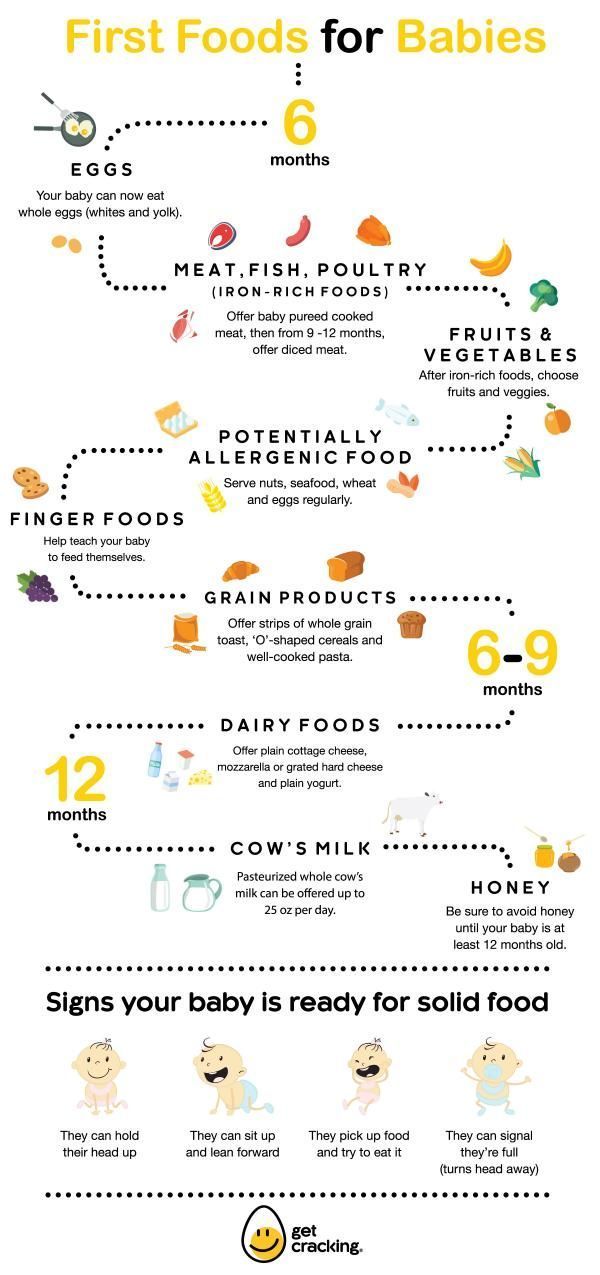High levels of arsenic in baby food
Homemade baby food contains as many toxic metals as store-bought options, report says
Consumer
By CBS New York Team
/ CBS/CNN
Report: Homemade baby foods could contain toxic heavy metals
Report: Homemade baby foods could contain toxic heavy metals 00:32NEW YORK -- Making baby food at home with store-bought produce isn't going to reduce the amount of toxic heavy metals in the food your baby eats, according to a new report.
"We found no evidence to suggest that homemade baby foods made from store-bought produce are better than store-bought baby foods when it comes to heavy metal contamination," said the paper's coauthor Jane Houlihan, research director for Healthy Babies, Bright Futures.
An alliance of nonprofits, scientists and donors, HBBF, which produced the report, has a stated mission of reducing babies' exposures to neurotoxic chemicals.
Researchers tested 288 foods bought at stores and farmers markets across the United States -- including grains, fruits, vegetables, snacks, teething foods, and family items that babies eat, such as cereals and rice cakes -- for lead, arsenic, mercury and cadmium. Those heavy metals are among the World Health Organization's top 10 chemicals of concern for infants and children.
"Toxic metal exposure can be harmful to the developing brain. It's been linked with problems with learning, cognition, and behavior," according to the American Academy of Pediatrics.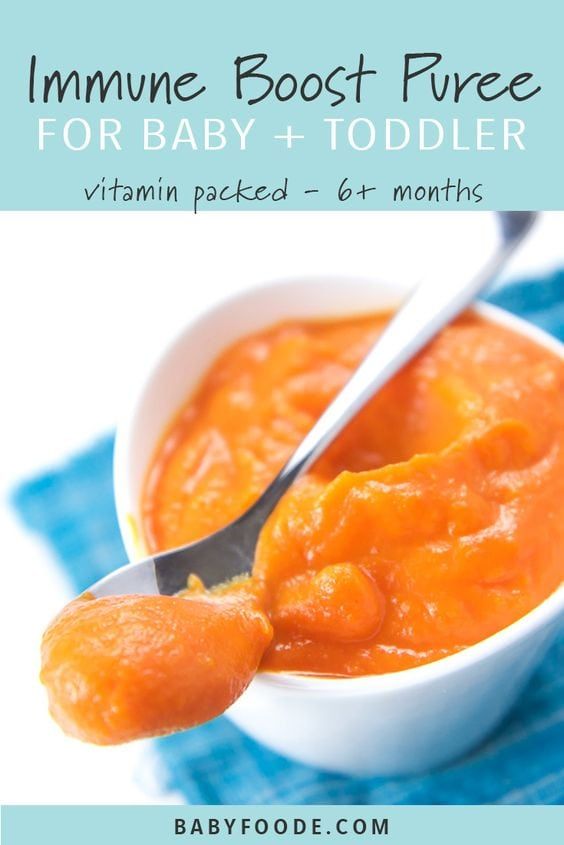
Researchers also pored over data from 7,000 additional food tests reported in published studies and by the US Food and Drug Administration.
Results showed 94% of manufactured baby foods, family foods and homemade purees made from purchased raw foods contained detectable amounts of one or more heavy metals.
Lead was found in 90% of manufactured baby food bought by shoppers for the report and 80% of store-bought family food and homemade purees. There is no safe level of lead, according to the AAP.
Arsenic was found in 68% store-bought baby food and 72% of family food either purchased or prepared at home. Cadmium was found in 65% of purchased baby food and 60% of family foods, and mercury was in 7% of store-bought baby food and 10% of family foods. (The highest levels of mercury are found in seafood, which was not tested in this analysis.)
The new report is a follow-up to a November 2019 report in which Healthy Babies, Bright Futures tested 168 foods purchased from major baby food manufacturers.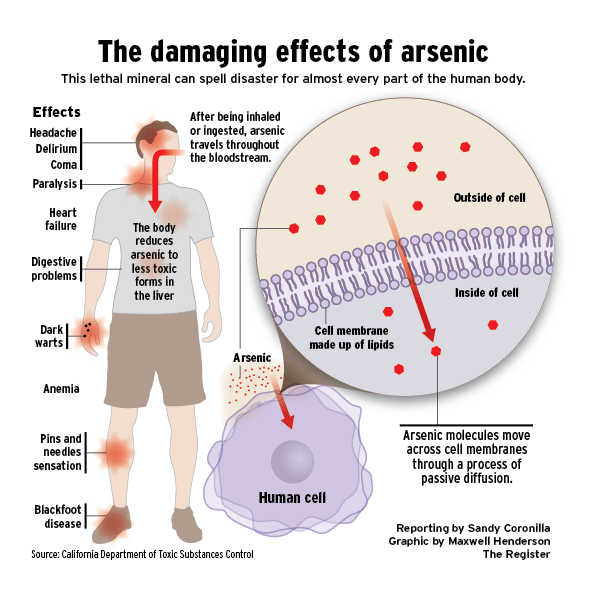 That analysis found 95% of store-bought baby food contained lead, 73% contained arsenic, 75% contained cadmium and 32% contained mercury. One-fourth of the foods tested that year contained all four heavy metals.
That analysis found 95% of store-bought baby food contained lead, 73% contained arsenic, 75% contained cadmium and 32% contained mercury. One-fourth of the foods tested that year contained all four heavy metals.
"After that report we saw so many people saying you can get around this problem by making your own baby food at home, so we decided to check," Houlihan said. "We suspected we'd find heavy metals in all kinds of food because they're ubiquitous contaminants in the environment.
"And that is exactly what we found -- heavy metals were in foods from every section of the store," Houlihan said. "What this says is that as the FDA is setting standards for heavy metals in baby food, they need to go beyond the baby food aisle."
What's a parent or caregiver to do? Feed baby with as many different types of foods as possible, said pediatrician Dr. Mark Corkins, chair of the Committee on Nutrition of the American Academy of Pediatrics. He was not involved in the study.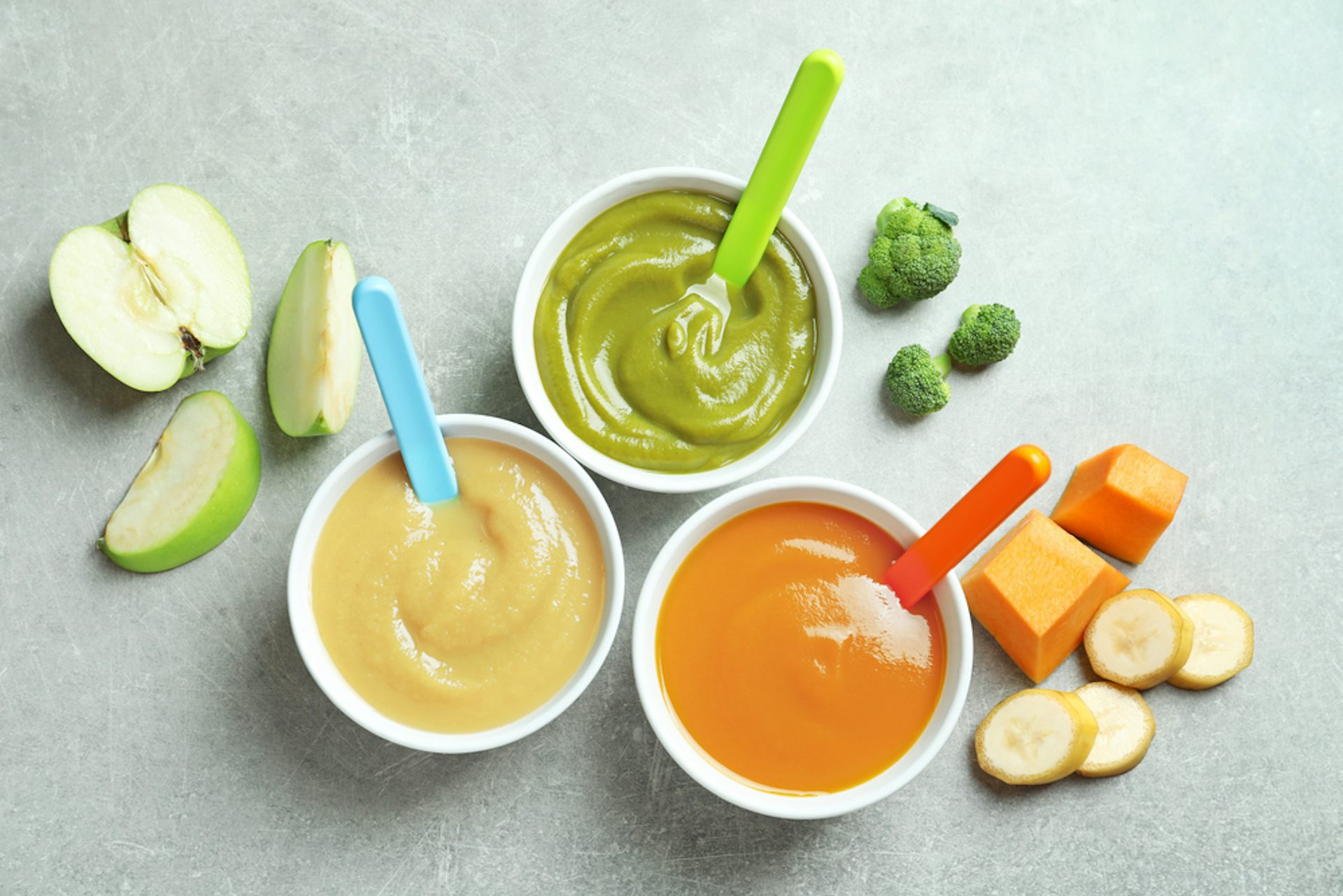
"If you spread foods out, and offer a wide variety of options, you'll have less toxicity," Corkins said. "And nutritionally that's always been the right thing to do to get the most micronutrients from the food you eat."
Does buying organic help?
The report found buying organic didn't lower heavy metal levels either, which was "not shocking or surprising," said Corkins, a professor of pediatrics at the University of Tennessee Health Science Center and Le Bonheur Children's Hospital in Memphis, Tennessee.
"It's the soil and water that's contaminated with arsenic and other heavy metals, so it doesn't matter if it's organic or traditional farming methods," Corkins said. That would apply to locally grown crops or even backyard gardens, if the soil had not been verified to be metal-free.
However, buying organic can help avoid other toxins the new report did not consider, such as herbicides and pesticides, said Dr. Leonardo Trasande, director of environmental pediatrics at NYU Langone Health. He was not involved in the study.
He was not involved in the study.
"There are other benefits to eating organic food, including a reduction in synthetic pesticides that are known to be as bad for babies, if not even more problematic," Trasande said.
"We've seen multiple studies show significant effects of synthetic pesticides on cognitive function in children as a result of prenatal exposure. We've seen images of the brain where certain parts are smaller that are crucial for higher order functioning after exposure," he added. "A simple step would simply be to say eat organic because regardless of anything we're talking about in this report, it's good for you."
Experts agree that battling toxins in baby foods is a job for government organizations who will need to work with growers, suppliers and manufacturers to institute regulations and safeguards. In the meantime, parents can make a difference.
"Making even one simple choice every day to lower a child's exposure will make a difference, whether that's staying away from rice-based snacks and serving a diced apple instead or choosing not to serve carrots and sweet potatoes every day," Houlihan said.
"With heavy metals and other toxins the risks add up over a lifetime," she added. "So even if some of these foods had been served to a child up to their second birthday, starting from there to lower exposure to toxins is going to add up. Every choice matters."
Least contaminated foods
Tested foods with low metal content contain one-eighth as much heavy metal contamination as foods with the highest levels, Houlihan said. These are foods that can be "eaten freely," the report suggested.
Fresh bananas, with heavy metal levels of 1.8 parts per billion, were the least contaminated of foods tested for the report. That's an "82-fold difference in average level of total heavy metals" from the most contaminated food, rice cakes, which tested at 147 parts per billion, according to the investigation.
After bananas, the least contaminated foods were grits, manufactured baby food meats, butternut squash, lamb, apples, pork, eggs, oranges and watermelon, in that order. Other foods with lower levels of contamination included green beans, peas, cucumbers, and soft or pureed home-cooked meats, the report found.
Other foods with lower levels of contamination included green beans, peas, cucumbers, and soft or pureed home-cooked meats, the report found.
Infant formula made with lead-free tap water was recommended. Tap water that has been tested and is free of lead is always a good choice. Milk is also a good choice, but only for babies 12 months and older.
Some healthy lower-metal foods, such as yogurt, unsweetened applesauce, beans, cheese, hard-boiled eggs and grapes that have been cut lengthwise, were good choices for snacks for babies, according to the report.
Fresh and frozen fruit -- including those used in homemade purees -- were options as well. But don't use canned fruits if you can avoid it: "Tests find lead 30 times more often in canned fruit than in fresh and frozen fruit," the report stated.
Parents and caregivers can also lower their baby's exposure to heavy metals by making some smart substitutions, the report said.
Using a frozen banana for a teething baby instead of a rice-based teething biscuit or rice rusk could lower total intake of heavy metals by 95%, according to the report.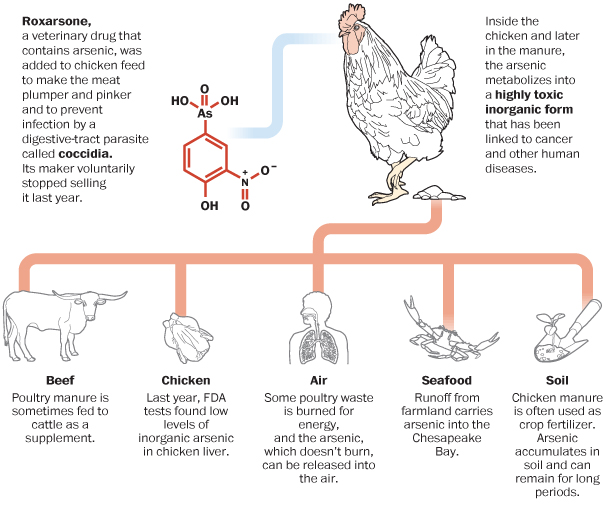 Another suggested teething aid: peeled and chilled cucumber spears.
Another suggested teething aid: peeled and chilled cucumber spears.
Avoid or limit these foods
The most heavily contaminated foods eaten by babies were all rice-based: "Rice cakes, rice puffs, crisped rice cereals and brown rice with no cooking water removed are heavily contaminated with inorganic arsenic, which is the more toxic form of arsenic," Houlihan said.
Arsenic is a natural element found in soil, water and air, and because rice is grown in water, it is especially good at absorbing inorganic arsenic. ("Inorganic" is a chemical term and has nothing to do with the method of farming.) Brown and wild rice are the worst offenders, as the bran contains the highest arsenic concentrations.
Prior research has shown that even low levels of inorganic arsenic exposure can impact a baby's neurodevelopment. A meta-analysis of studies on the topic found a 50% increase in arsenic levels in urine would be associated with a 0.4-point decrease in the IQ of children between the ages of 5 and 15.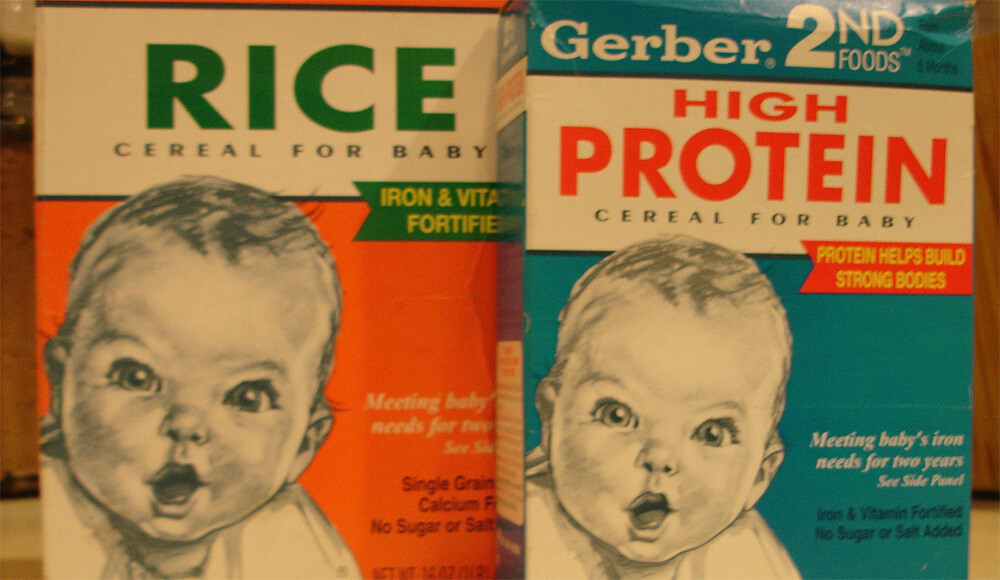
Testing by HBBF found rice cakes were the most contaminated with inorganic arsenic, followed by crisped rice cereal, rice-based puffs and brown rice. The report recommended those foods be avoided entirely, unless the brown rice is cooked with extra water that is poured off before consumption (much like pasta). It's best to do that with all rice, including white and wild rice, the report said, as it can reduce arsenic levels by up to 60%.
Rice-based teething biscuits or rusks and white rice came next on the most contaminated list, the report said. White rice is milled to remove the outer layers, but experts say arsenic levels remain high enough to be concerning, especially if rice is a daily staple.
"Inorganic arsenic averaged 100 parts per billion in brown rice infant cereal and 74 parts per billion in white rice infant cereal in our tests," Houlihan said. "Baby food companies have taken brown rice cereal off the market because of its high arsenic levels."
Parents and caregivers can help by staying away from high-arsenic varieties of white rice grown in Arkansas, Louisiana, Texas, or simply "US" and instead choosing lower-arsenic basmati rice from California, India and Pakistan, as well as sushi rice from the US, the report said.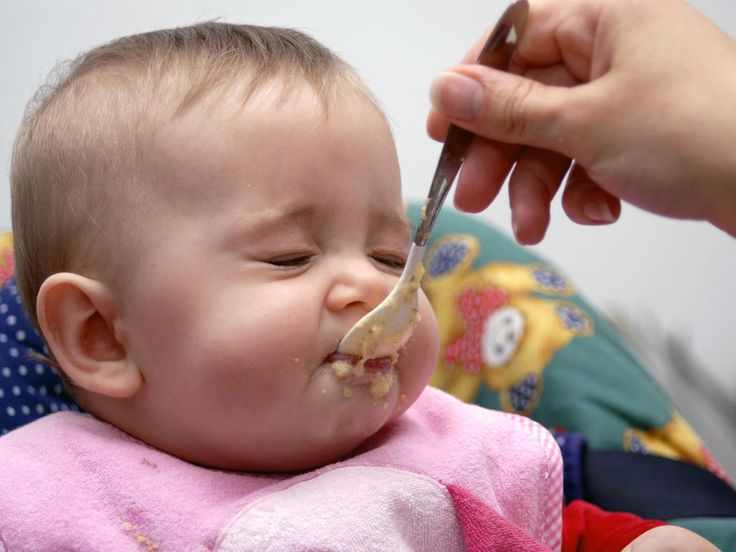
Serve these foods rarely
After rice-based foods, the analysis found the highest levels of heavy metals in raisins, non-rice teething crackers, granola bars with raisins and oat-ring cereals. But those were not the only foods of concern: Dried fruit, grape juice, arrowroot teething crackers and sunflower seed butter all contained high amounts of at least one toxic metal, according to the report.
"Many foods have a kind of unique, heavy metal profile," Houlihan explained. "For example, we saw very high levels of cadmium in things like spinach, leaf lettuce and peanut butter."
However, the human body doesn't absorb cadmium as easily as other heavy metals, and for that reason "it doesn't have as high a level of concern," Houlihan added.
"There's also not as much evidence that cadmium is neurotoxic to babies, or at least the body of evidence isn't there at the same levels as lead and arsenic," she said. "Lead and arsenic damage isn't reversible -- these are permanent impacts on IQ, learning ability and behavior, so it's a big deal. "
"
Root and tuber vegetables may have higher levels of heavy metals like lead and arsenic because they grow underground. In fact, the investigation found that nutritious baby favorites like carrots, sweet potatoes, squash and many types of potatoes did have concerning levels of heavy metals.
Even the same food could have varying levels of toxic metals, according to the report. For example, a shopper in Raleigh, North Carolina, bought a sweet potato with 60.7 parts per billion of lead -- 10 times more than the store-bought sweet potato puree she purchased. A Chicago shopper purchased a fresh carrot with eight times more arsenic than the premade carrot baby food she took home, the investigation found.
Yet shoppers in Tennessee and California found the opposite -- their fresh produce had minimal levels of heavy metals compared with the manufactured baby food brands they bought.
"As a parent, you don't know what you're picking up out of the produce bin," Houlihan said.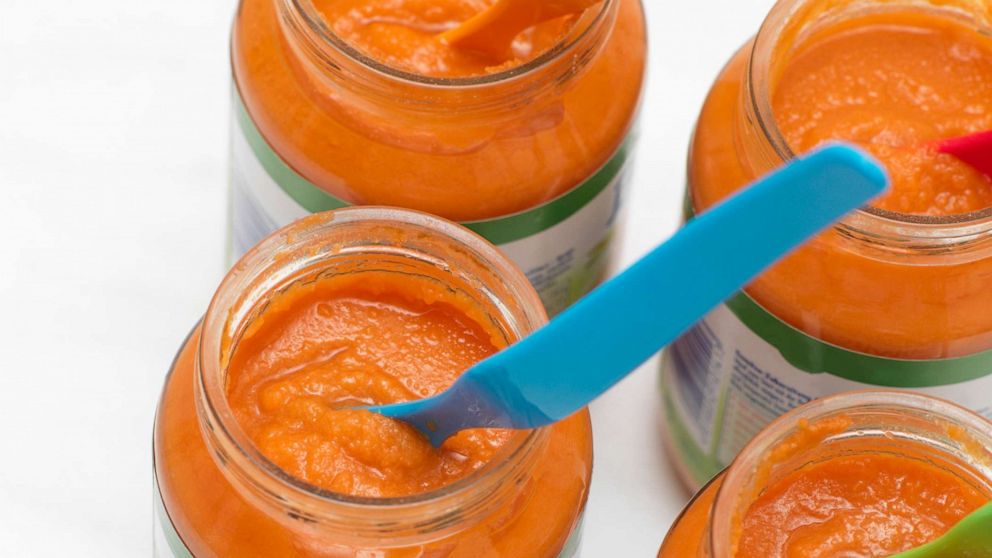 "Is it elevated because of the cultivar -- the particular type of sweet potato or carrot? Or is it elevated because it's grown in an area where the soil has naturally high levels of lead?
"Is it elevated because of the cultivar -- the particular type of sweet potato or carrot? Or is it elevated because it's grown in an area where the soil has naturally high levels of lead?
Answering these questions will be the responsibility of government regulators and industry, Houlihan said. The FDA has a Closer to Zero campaign, for example, which could take on the issue.
CNN reached out to the FDA for comment but didn't immediately received a response.
"And remember, if you're protecting the basic ingredients that parents are using to make food at home, you're not only protecting babies and toddlers, you're protecting pregnant women as well. Babies in utero are particularly vulnerable to toxins while the brain is growing at such a rapid pace."
With no way of knowing levels of toxic metals in the soil where produce is grown, parents and caregivers need to add one more step to their efforts to avoid these substances, Houlihan suggested. In addition to mixing up the variety of foods and not serving the same options each day, parents can "choose different brands or varieties of foods or shop in different stores from week to week to avoid choosing a high-metal source regularly.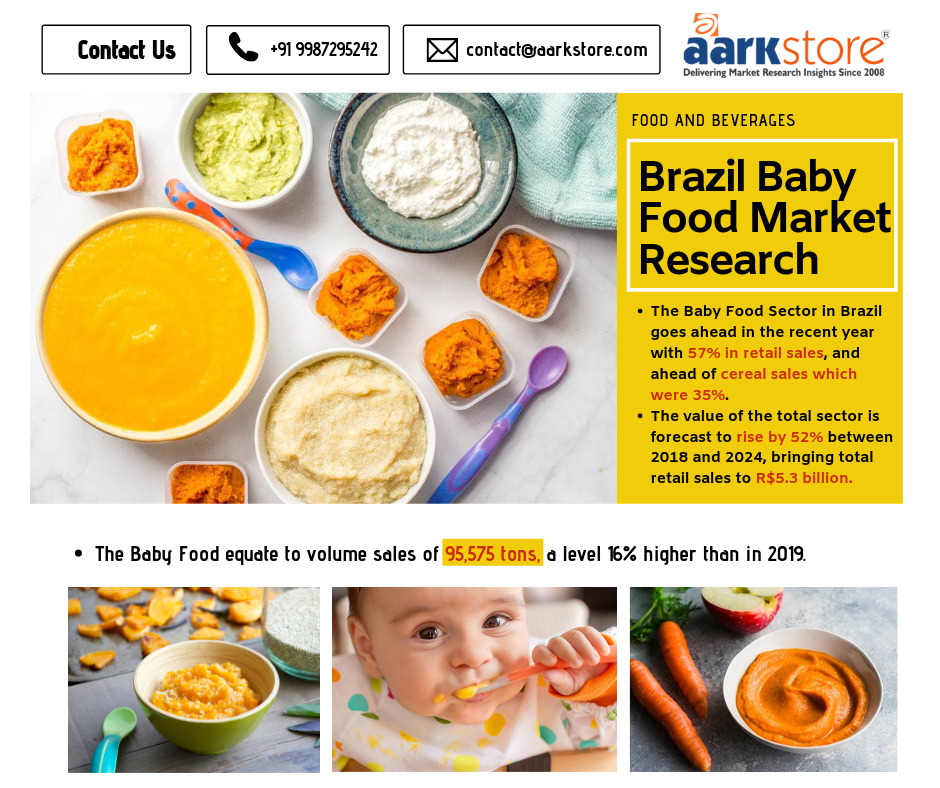 "
"
CBS New York Team
The CBS New York team is a group of experienced journalists who bring you the content on CBSNewYork.com.
Twitter Facebook Instagram
First published on August 11, 2022 / 6:16 PM
© 2022 CBS Broadcasting Inc. All Rights Reserved. This material may not be published, broadcast, rewritten, or redistributed. CNN contributed to this report.
Thanks for reading CBS NEWS.
Create your free account or log in
for more features.
Please enter email address to continue
Please enter valid email address to continue
Which Products Have the Highest Levels?
When you purchase baby food for your child, you expect it to be safe from toxins that could cause harm. This year, however, parents were shocked to learn that many popular baby foods found in their local supermarket contain arsenic at dangerously high levels. Studies have shown that consumption of arsenic at high levels can cause lifelong brain damage and neurodevelopmental disorders in children, including autism spectrum disorder (ASD) and attention-deficit/hyperactivity disorder (ADHD).
This year, however, parents were shocked to learn that many popular baby foods found in their local supermarket contain arsenic at dangerously high levels. Studies have shown that consumption of arsenic at high levels can cause lifelong brain damage and neurodevelopmental disorders in children, including autism spectrum disorder (ASD) and attention-deficit/hyperactivity disorder (ADHD).
At Baum Hedlund Aristei & Goldman, concerned parents contact us daily wondering if their baby food is safe. The answer, unfortunately, is that foods from companies like Beech-Nut, Earth’s Best Organic, Nurture, Sprout Foods, Plum Organics, Walmart, and Gerber have arsenic, lead, cadmium, and mercury at levels that far exceed the safety thresholds set by the U.S. Food and Drug Administration (FDA) and Environmental Protection Agency (EPA) for bottled water (unbelievably, this is the only current minimum set by these agencies as they have yet to set minimums in baby foods, and the bottled water limits are only for adult exposure).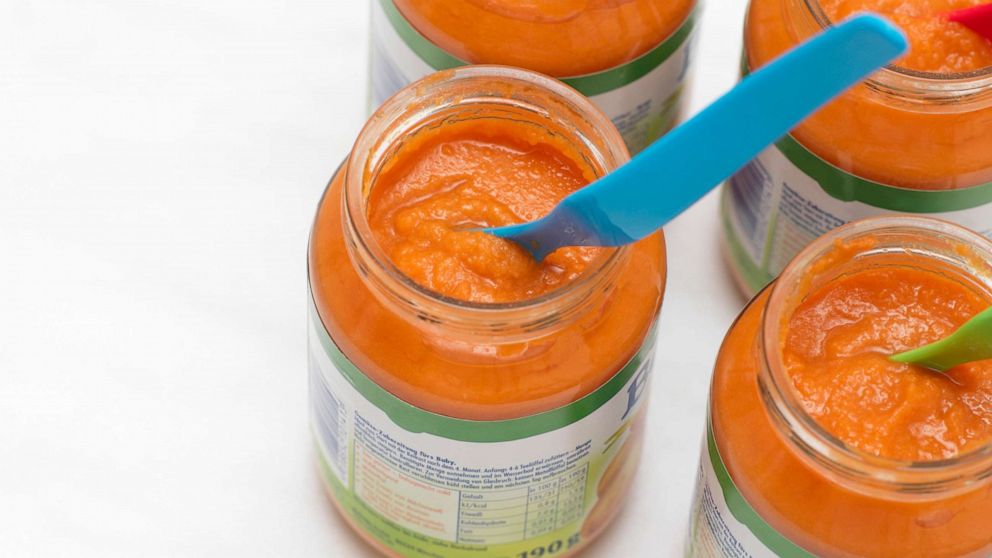 Worse, these same companies knowingly sell these products to unsuspecting parents.
Worse, these same companies knowingly sell these products to unsuspecting parents.
Parents have a right to know which baby foods to avoid due to dangerously high levels of toxic heavy metals. In this blog, we will list baby food brands, products, and ingredients that have tested at high levels of arsenic and other toxic metals. We hope it will help parents make a more informed choice the next time they are browsing the baby food aisle in their local supermarket.
Baby Food Brands With the Highest Levels of Toxic Heavy MetalsAccording to a report published by the United States House of Representatives Subcommittee on Economic and Consumer Policy and the Committee on Oversight and Reform, the following baby food brands contain the highest levels of toxic heavy metals:
- Nurture, Inc.
 (Nurture)
(Nurture)- Sells Happy Family Organics, including baby food products by the brand name HappyBABY
- Beech-Nut Nutrition Company (Beech-Nut)
- Hain Celestial Group, Inc. (Hain)
- Sells baby food products by the brand name Earth’s Best Organic
- Gerber
- Walmart Inc. (Walmart)
- Sells baby food products by the brand name Parent’s Choice
- Sprout Foods, Inc. (Sprout Organic Foods)
- Plum Organics
The U.S. government is aware of how dangerous arsenic is for human consumption, which is why there are strict regulations regarding arsenic levels in drinking water. The FDA has set the maximum contaminant levels (MCL) of inorganic arsenic in bottled water at 10 ppb (parts-per-billion). However, this limit was created in reference to adult exposure, not infants. Compared to the FDA’s inorganic arsenic threshold for bottled water, the test results of baby foods and their ingredients in the government report are 91 times greater than permitted arsenic levels.
However, this limit was created in reference to adult exposure, not infants. Compared to the FDA’s inorganic arsenic threshold for bottled water, the test results of baby foods and their ingredients in the government report are 91 times greater than permitted arsenic levels.
This may come as a shock to parents: the FDA does not have a comprehensive standard for arsenic in baby foods. Presently, the FDA only regulates arsenic in infant rice cereal at an astoundingly high maximum level of 100ppb. Other baby food products are unregulated.
Linda McCauley studies environmental health effects as Dean of the Nell Hodgson Woodruff School of Nursing at Emory University. According to Dr. McCauley, “[n]o level of exposure to these [heavy] metals has been shown to be safe in vulnerable infants.” She adds, “the major windows of developmental vulnerability occur during infancy and early childhood due to continuing brain development after birth.” In short, even small amounts of exposure to arsenic and other toxic metals can have devastating health outcomes for babies and children.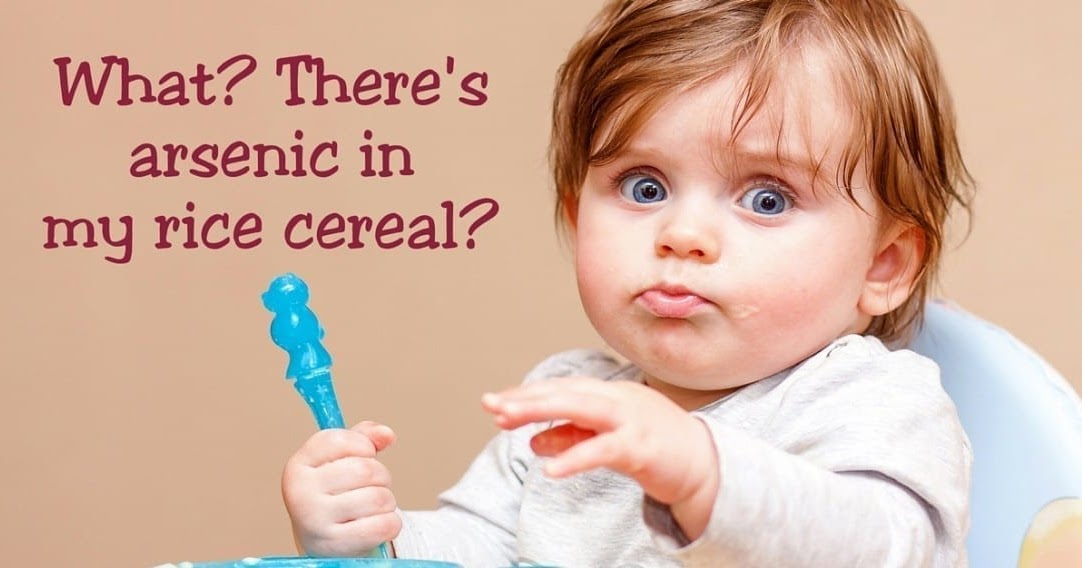
Nurture (HappyBABY)
In response to government inquiries, tests conducted by Nurture (HappyBABY) revealed that the company chose to sell baby foods containing as much as 180 parts per billion (ppb) inorganic arsenic. Ppb is used to measure the concentration of a contaminant in soils, sediments, and water. 1 ppb equals 1 µg (microgram) of substance per kg of solid (µg/kg). For the average baby weighing approximately 3kg (between 6 and 7 lbs), the quantities of heavy metals in baby foods pose significant health risks.
More than a quarter of the products Nurture tested had more than 100 ppb inorganic arsenic. The company’s test results showed that a typical Nurture baby food product sold in stores contained 60 ppb inorganic arsenic.
Some of the Nurture baby food products listed in the baby food report that include high levels of arsenic include:
- Apple & Broccoli Puffs (Nurture’s highest arsenic product – 180ppb)
- Banana & Pumpkin Puffs
- Strawberry & Beet Puffs
- Kale & Spinach Puffs
- Purple Carrot & Blueberry Puffs
- Sweet Potato & Carrot Puffs
- Apple Rice Cakes
Hain (Earth’s Best Organic)
The government report on baby food revealed that Hain (Earth’s Best Organic) does not regularly test its finished baby food products for arsenic or other heavy metals.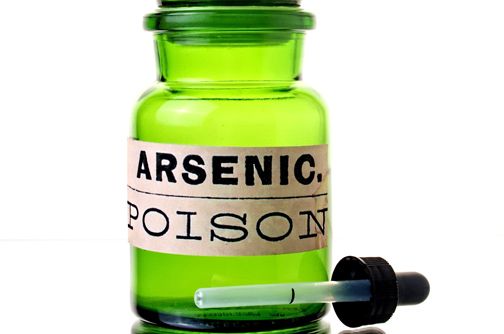 When it did, the company found that one of its finished products contained as much as 129 ppb inorganic arsenic.
When it did, the company found that one of its finished products contained as much as 129 ppb inorganic arsenic.
Hain mainly tested the ingredients in their products rather than their finished products sold in stores. Some of the ingredients tested as high as 309 ppb arsenic.
The following Hain ingredients tested above 100 ppb arsenic:
- Organic Brown Rice Flour (Hain’s highest arsenic product 309 ppb)
- Vitamin Pre-Mix
- Organic Whole Raisins
- Organic Soft White Wheat Flour
- Organic Spelt Flour
- Organic Barley Malt Extract
- Organic Yellow Split Pea Powder
- Medium Grain Whole Rice
- Organic Brown Rice Flour
- Organic Butternut Squash Puree
- Organic Blueberry Puree
- Organic Cinnamon Powder
Beech-Nut
Like Hain, Beech-Nut does not test its finished baby food products for arsenic levels. Some ingredients used in Beech-Nut baby foods contained as much as 913.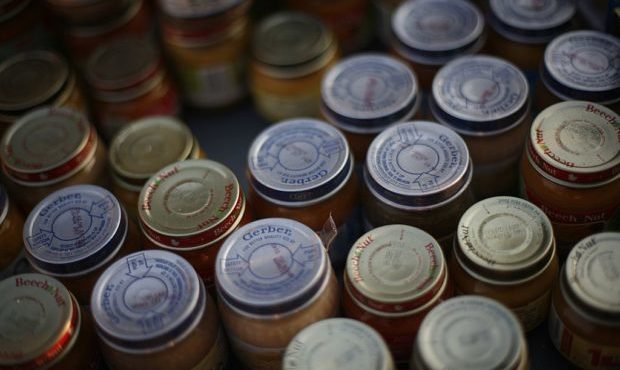 4 ppb arsenic, per the government report. The company regularly utilized additives with high levels of arsenic. Some of the additives, which were used to alter product traits such as “crumb softness,” tested more than 300 ppb arsenic.
4 ppb arsenic, per the government report. The company regularly utilized additives with high levels of arsenic. Some of the additives, which were used to alter product traits such as “crumb softness,” tested more than 300 ppb arsenic.
In total, the report indicated that Beech-Nut used 45 different ingredients that contained over 100 ppb arsenic, including:
- Amylase
- BAN 800
- Alpha Amylase
- Sebamyl 100
- Organic Rice Flour
- Enzyme
- Organic Cumin
- Organic Rice
- Rice Flour
- Cumin
- Oregano
- Vitamin Mix
This summer, Beech-Nut issued a baby food recall after state officials in Alaska found high levels of arsenic in Beech-Nut branded Single Grain Rice Cereal. The company also decided to leave the infant rice cereal market out of concern that the company would not be able to keep arsenic levels below the FDA guidance level.
Gerber
According to the government report, Gerber routinely used flour that tested above 90 ppb arsenic.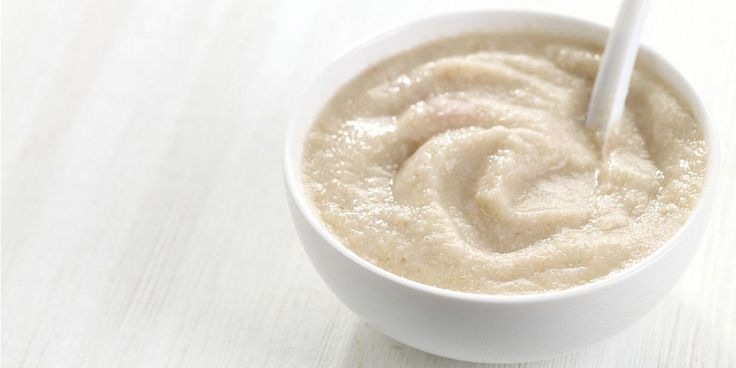 While the company did not submit arsenic testing results to the government for all of its ingredients, the baby food report noted that Gerber used five batches of rice flour that tested above 98 ppb arsenic, and 67 batches that contained more than 90 ppb arsenic.
While the company did not submit arsenic testing results to the government for all of its ingredients, the baby food report noted that Gerber used five batches of rice flour that tested above 98 ppb arsenic, and 67 batches that contained more than 90 ppb arsenic.
Walmart (Parent’s Choice)
This summer, Walmart issued a baby food recall after three lots of Parent’s Choice Rice Baby Cereal (8 oz) tested at increased levels of arsenic.
The product lots of Parent’s Choice Rice Baby Cereal subject to recall:
Lot 21083 | UPC Code #00681131082907 | Best if Used by: JUN 24 2022
Lot 21084 | UPC Code #00681131082907 | Best if Used by: JUN 25 2022
Lot 21242 | UPC Code #00681131082907 | Best if Used by: NOV 30 2022
Earlier this year, the government subcommittee noted in its baby food report that Walmart failed to provide documents and information as requested on heavy metals in its foods. The report asked whether Walmart “might be obscuring the presence of even higher levels of toxic heavy metals in their baby food products than their competitors’ products.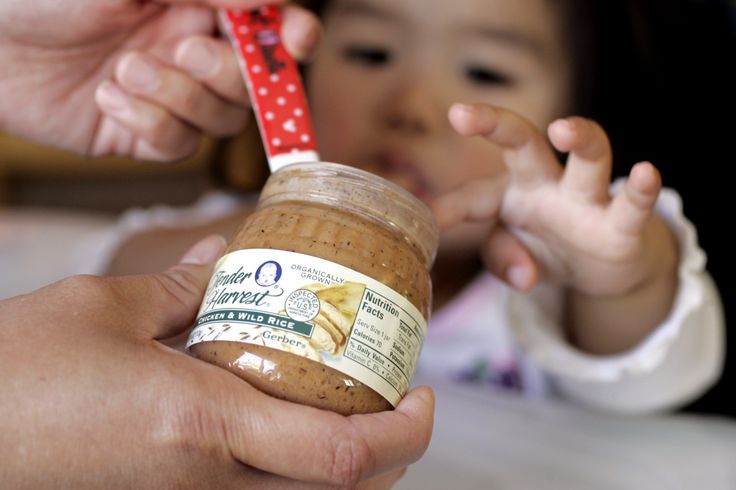 ”
”
Walmart did provide documentation to the subcommittee for its second report. Walmart, the report noted, shows a “concerning lack of attention to toxic heavy metal levels in baby food and an abandonment of its previously more protective standards.”
How Toxic Heavy Metals Can Harm Your Baby for LifeWhen babies are exposed to toxins like arsenic, lead, cadmium, and mercury, long-term consequences can result, including:
- Permanent decreases in IQ
- Neurodevelopmental disorder
- Reduced future economic productivity
- Heightened risk of future criminal and antisocial behavior
- Cancer
The government report on baby foods, and other scientific studies on the dangers of arsenic, make use of the phrase “inorganic arsenic.” An organic arsenic compound where the arsenic molecule is attached to carbon, is not as toxic as inorganic arsenic. Organic arsenic is found in fish, shrimp, and other seafood.
Inorganic arsenic compounds, on the other hand, do not contain carbon, and are highly toxic. Inorganic arsenic is often an issue in rice cultivation. Baby food companies have said the problem with arsenic in rice is unavoidable. But this is not the case if the rice is sourced properly. For example, according to Dr. Joe Schwarcz, “California rice tends to be very low in arsenic.”
Infant Rice Cereal Contains the Highest Levels of ArsenicRice cereal is one of the main sources of arsenic exposure in babies. Research shows that when tested for arsenic, all infant rice cereals contain higher levels of the toxin than brands that sell non-rice and multi-grain cereals. In fact, about six times more arsenic is found in infant rice cereals than in other types of infant cereals.
Research largely indicates that arsenic levels are lower in infant cereals containing the following ingredients:
- Barley
- Buckwheat
- Oatmeal
- Multi-grain
- Quinoa
- Wheat
According to researchers at the University of Buffalo and in China, there is consistent evidence to support a connection between inorganic arsenic exposure during the first few years of life and a diagnosis of autism spectrum disorder (ASD).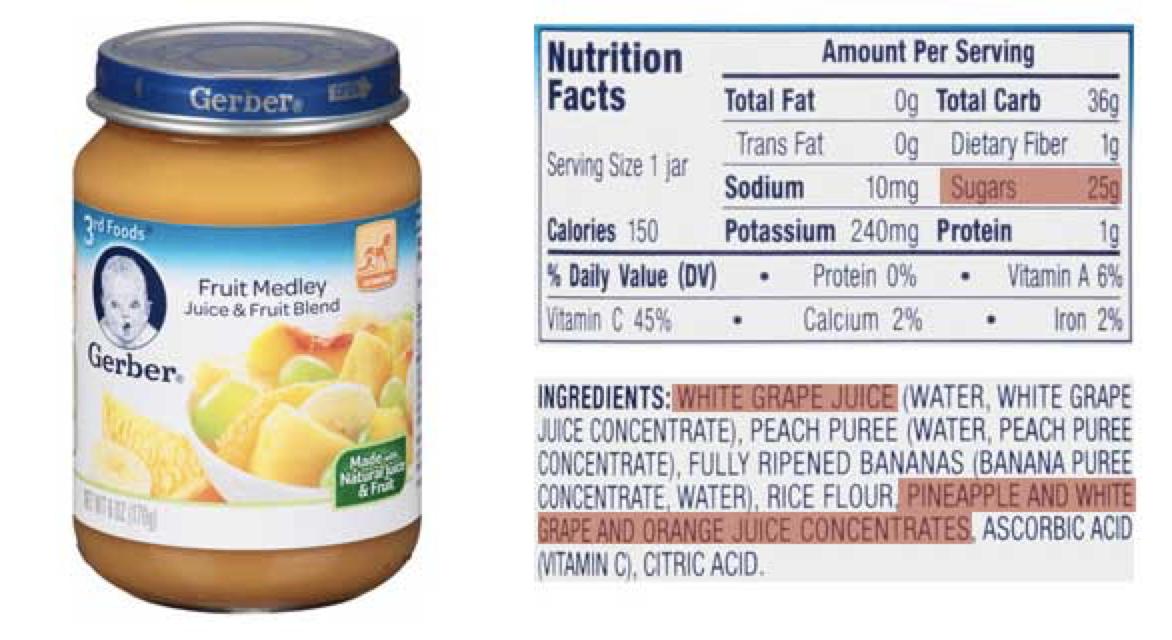 Not only that but arsenic is also known to significantly impact brain development and cause deficiencies in cognitive function and behavioral performance in adolescents.
Not only that but arsenic is also known to significantly impact brain development and cause deficiencies in cognitive function and behavioral performance in adolescents.
According to the study authors, “We believe it is in the best interest of policymakers and the public to reduce exposures to iAs [inorganic arsenic] and Pb [lead] among pregnant women and children. Further, our research supports the need for large perspective human studies with accurate measurement and determination of the long-term body burden of iAs and Pb exposures to assess the impact of iAs and Pb exposures on ASD risk.”
We’re Here to Help Impacted FamiliesIf your child has developed autism or ADHD as a result of toxic heavy metals in baby foods, you may be eligible to pursue compensation in a toxic baby food lawsuit. The consumer attorneys at Baum Hedlund Aristei & Goldman represent hundreds of parents throughout the country in baby food cases. Our firm is no stranger to taking on large corporations.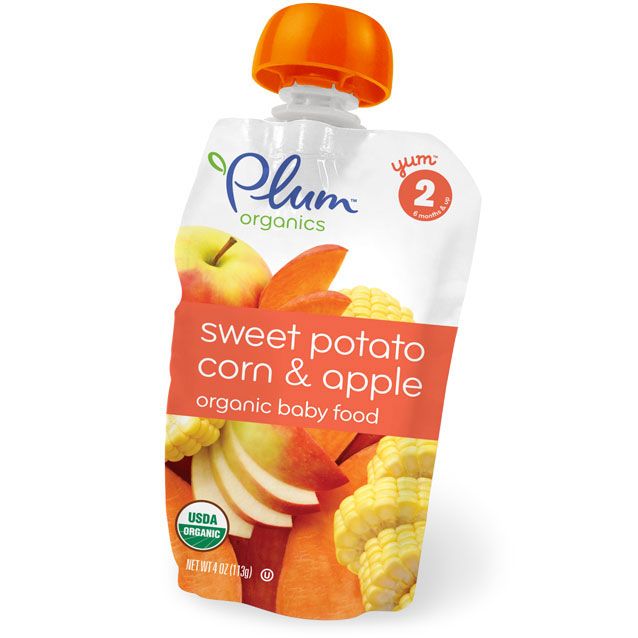 Across all areas of practice, we have won more than $4 billion in verdicts and settlements.
Across all areas of practice, we have won more than $4 billion in verdicts and settlements.
Call (855) 948-5098 or submit an online contact form today to get your free consultation with one of our skilled toxic baby food lawsuit attorneys.
In the US, 95% of baby food tested contains toxic metals
An analysis of 168 baby foods from leading manufacturers in the US found 95% lead, 73% arsenic, 75% cadmium, and 32% mercury. A quarter of products contain all four types of heavy metals at once.
One out of five baby foods tested contained 10 times the lead limit of one part in a billion (1-ppb) approved by the non-profit organization Public Health Advocates, although experts agree that there are no safe lead content standards.
The results were almost identical to a previous Food and Drug Administration (FDA) study in which almost all of the same metals were found in 33 of 39 baby foods tested.
According to the analyzes carried out, the most dangerous products due to the high content of neurotoxins were rice products, sweet potatoes, and fruit juices.
"Even in residual amounts, these toxic contaminants can affect brain development and lower a child's IQ. The detrimental effects accumulate with each meal," the report says.
Testing was initiated by Healthy Babies Bright Futures, which describes itself as an alliance of scientists, nonprofits and investors working to reduce infant exposure to neurotoxic chemicals.
Rice products
Rice porridge, rice dishes and snacks topped the list of the most toxic foods for children.
"These popular baby foods not only contain high amounts of inorganic arsenic, but also almost always contain four toxic metals at once," the report says.
Previous tests have shown that even low levels of arsenic can affect the development of a child's nervous system. A 2004 study in Bangladesh followed children who were exposed to arsenic in their drinking water and found that they scored very low on an intelligence test. A meta-analysis of studies on this topic found that a 50% increase in urinary arsenic was associated with a 0.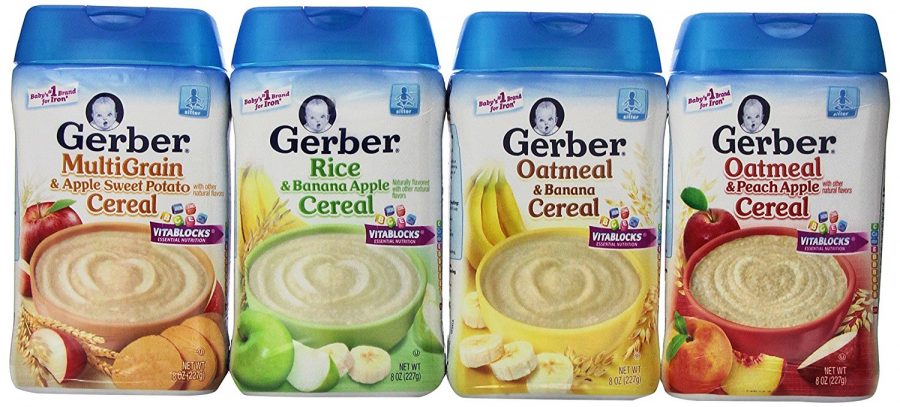 4 point decrease in the IQ of children aged 5 to 15 years.
4 point decrease in the IQ of children aged 5 to 15 years.
Arsenic is a natural element found in soil, water and air, and its inorganic form is highly toxic. (“Inorganic” is a chemical term and has nothing to do with the farming method.)
Since rice is grown in water, it absorbs inorganic arsenic particularly well, and according to the FDA, has the highest concentration of this poison of any food products.
And from this point of view, brown and wild rice are worse than white rice, because the process of grinding to create white rice removes the outer layers, where most of the arsenic accumulates.
But you can't rely on organic food either. A 2012 study found that brown rice syrup (a common sweetener in organic foods) also contains high levels of arsenic. One "organic" infant formula intended for babies over 12 months of age contained 6 times the amount of inorganic arsenic currently recognized as safe by the U.S. Environmental Protection Agency (Environmental Protection Agency)
HealthyBabies tested that 4 out of 7 rice cereals contained the most toxic form of arsenic in excess of the FDA limit of 100-ppb.
What needs to be done
Big baby food companies and the FDA need to take immediate action, the report says. While the FDA is looking for a way to reduce the risks of exposure to toxic substances, and arsenic levels in rice and juice have been lower over the past 10 years, exposure to heavy metals is still too high.
"When the FDA acts, companies respond. It is important that the FDA use its authority more effectively and more quickly to reduce heavy metals in baby foods," said study author Jane Houlihan, research director works in Healthy Babies Better Futures.
What parents can do
Research has revealed which baby foods are the most dangerous and what are the alternatives.
Puffed rice and porridge snacks
Rice porridge is the main source of arsenic in children's diets because it is often used as first food. Puffed rice and other rice flour snacks also contain high levels of toxins.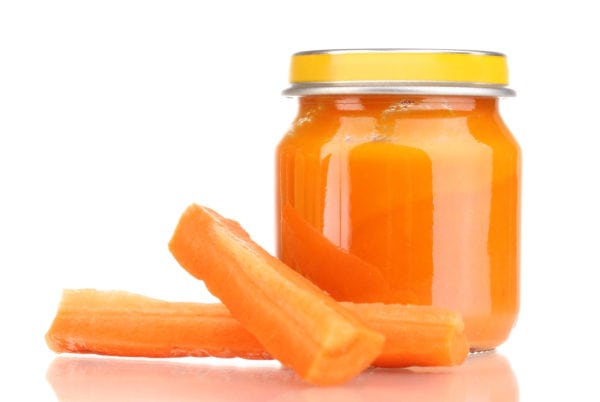 Healthy Babies suggests giving cereals that are low in arsenic, such as oatmeal or multigrain cereals, as well as packaged snacks without rice.
Healthy Babies suggests giving cereals that are low in arsenic, such as oatmeal or multigrain cereals, as well as packaged snacks without rice.
Pediatrician Tanya Altmann, author of What to Feed Your Baby, echoes the advice of the American Academy of Pediatrics to give babies more variety as first foods, including grains such as oats, barley, wheat and quinoa.
"The best first foods for babies are avocado, mashed vegetables, oatmeal with peanut butter and salmon," says Altmann. "These foods contain all the nutrients babies need, promote taste bud development and healthy food preference, and reduce potential allergic reactions."
She believes that meat is a better source of iron and zinc for babies than rice porridge, "I do not recommend giving rice porridge to babies for several years after weaning."
If you still want to cook rice for your kids, Healthy Babies recommends boiling it in extra water and draining it before eating. This will cut the arsenic content by 60%, the organization says, based on an FDA study.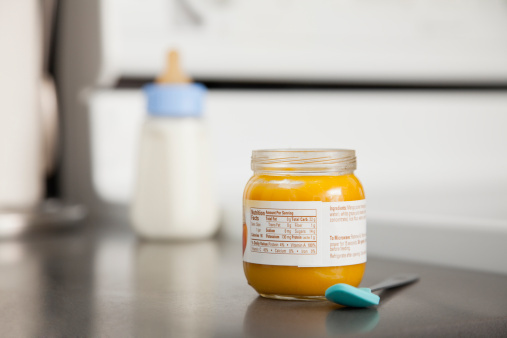
"To minimize toxin levels, buy basmati rice grown in California, India and Pakistan. White rice contains less arsenic than brown rice," the report says.
Teeth food
Special baby biscuits for teething may contain arsenic, lead and cadmium, the report says. Instead, to relieve pain, it is better to offer your kids frozen bananas, peeled chilled cucumbers, a clean damp sponge or terry cloth. But it is important to ensure that the baby does not choke!
Drinks
Juice is often a parent's lifesaver when it comes to watering a child, but the American Academy of Pediatrics calls it a bad option. Juices are too high in sugar, lack fiber, and lead to cavities and obesity in the future. Apple, pear, grape and other fruit juices can also contain lead and arsenic, so frequent juice consumption puts them in the lead in these heavy metals.
Instead, experts say water and milk are the best choice depending on the child's age.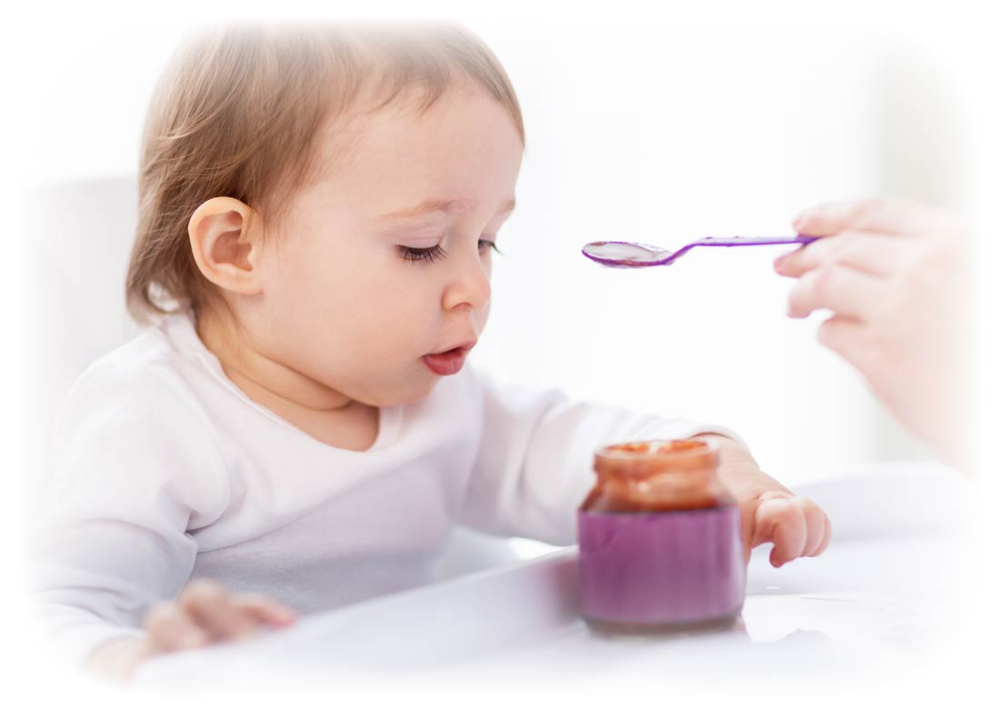 Babies under 6 months old only need breast milk or formula. The optimal drink for children in the second year of life is water and whole milk. Between the ages of 2 and 5, parents should switch to skim or low-fat milk and continue to give their children water.
Babies under 6 months old only need breast milk or formula. The optimal drink for children in the second year of life is water and whole milk. Between the ages of 2 and 5, parents should switch to skim or low-fat milk and continue to give their children water.
Juice intake should be kept to a minimum at any age. A word of advice: add water to your juice to make it last a long time, and give preference to a drink that you are sure is 100% juice.
Fruits and vegetables
Although sweet potatoes and carrots are excellent sources of vitamin A and other key nutrients, they have also been found to be high in lead and cadmium. Keep feeding these vegetables to your children, but don't forget to give plenty of other fruits and vegetables in different colors to add variety to your diet.
0102 Sandee Lamotte , CNN
Published: October 17, 2019
https-com/2019/10/17/17/17/17/17/17/17/17/17/17/17/17/17/17/17/17/17/17I -toxic-metals-wellness/index. html?no-st=1571827580
html?no-st=1571827580
Arsenic in baby food and drinking water.
Although most people know little about chemicals and poisons, almost everyone knows that arsenic is bad. Back in the first century AD. Arsenic was known to be a highly effective poison. In the XIV-XV centuries, during the reign of Borgia, this poison was improved and widely used to destroy political opponents. Arsenic is present in groundwater in many places around the world and therefore easily finds its way into our food and drink. That is why arsenic is found even in baby food.
Although we have long known about the toxicity of arsenic, much less is known about the health effects of low levels. What is the danger of small doses of arsenic consumed over a long period of time? Should parents be concerned about the presence of arsenic in baby cereals, fruit juice, or drinking water?
How does arsenic get into water and food?
Arsenic occurs naturally in two forms: organic and inorganic. Inorganic arsenic is naturally present in the earth's crust, it combines with oxygen and sodium. Inorganic arsenic dissolves in water. Because of this, it can be absorbed by plant roots. In addition, arsenic is an integral part of pesticides. Organic arsenic in combination with carbon is found in seafood. Studies show that such arsenic is significantly less toxic than inorganic.
Inorganic arsenic is naturally present in the earth's crust, it combines with oxygen and sodium. Inorganic arsenic dissolves in water. Because of this, it can be absorbed by plant roots. In addition, arsenic is an integral part of pesticides. Organic arsenic in combination with carbon is found in seafood. Studies show that such arsenic is significantly less toxic than inorganic.
What foods can contain high levels of arsenic?
The US Food and Drug Administration (FDA) does not currently have regulations on arsenic levels in rice. But after recent scandals, the FDA has proposed a threshold level of 100 ppb for arsenic in children's rice cereals. This will prohibit the sale of products in which the level of arsenic is above the established threshold.
The FDA states that about half of rice baby food does not exceed the suggested threshold. Unfortunately, these claims mean that half of baby food contains arsenic above this threshold. The FDA has not examined arsenic levels in other rice foods. Since baby rice cereal is recommended as the first solid food for toddlers, minimizing arsenic should be an absolute priority.
Since baby rice cereal is recommended as the first solid food for toddlers, minimizing arsenic should be an absolute priority.
Other foods containing significant levels of arsenic include apple and pear juices. During a 2005-2011 FDA study, arsenic was found to be present in proportions of 45 ppb for apples and 124 ppb for pears in juice and concentrates. The main source of arsenic in these fruits is pesticides used in garden pollination. In 2013, the FDA proposed a 10 ppb threshold for arsenic in apple juice.
How does arsenic get into rice?
Since rice absorbs a lot of water during its growth, it absorbs more arsenic than other grains (wheat, oats or rye). Brown rice tends to contain higher concentrations of arsenic than white rice, as arsenic accumulates mostly in the outer layers, which are removed in white rice. Studies have shown that rice grown in the south-central United States contains higher levels of arsenic than rice grown in other states and countries.
According to a 2007 study, the likely reason for this is the massive use of arsenic-containing pesticides to control cotton-destroying insect pests. In the 1930s and 1960s, 10-15 pounds of pesticides were dumped on every acre of fields.
Arsenic chemicals have also been used to reduce debris in mechanized cotton harvesting. These chemicals shriveled up the leaves, which fell off before the harvest began. These chemicals were applied in volumes of 3-4.5 pounds per acre.
For example, in Texas, 6 parts per million of arsenic is the natural norm for soil arsenic. But due to the massive use of pesticides and other chemicals containing arsenic, the concentration of arsenic in Texas fields is more than 40 parts per million. Therefore, growing rice in fields that were once used to grow cotton results in high levels of arsenic in the rice.
How does arsenic affect health?
Unlike lead, arsenic does not accumulate in the body and most of it is excreted in the urine after a few hours. The remaining arsenic is deposited in the hair, nails, skin, and to a lesser extent, in the bones and teeth. The impact of arsenic on the body depends on the form of arsenic and human organs.
The remaining arsenic is deposited in the hair, nails, skin, and to a lesser extent, in the bones and teeth. The impact of arsenic on the body depends on the form of arsenic and human organs.
Inorganic arsenic has long-term serious effects on the skin, bladder, kidneys, nervous system, it causes lung cancer, diabetes, cardiovascular disease.
I myself have done research on the effects of arsenic on pregnant women. Studies have shown that arsenic adversely affects the development of the fetus. Animal studies have shown that arsenic can cause birth defects and miscarriages. Studies of human exposure to arsenic have shown that among those who live near steelworks, stillbirths are more common due to high levels of arsenic in air, dust and drinking water.
The presence of arsenic in rice has long been known. For example, a 2012 study found that American children who eat rice have higher levels of arsenic in their urine. The same was found in a 2016 study of babies fed baby rice porridge. However, there is currently very little research on the adverse effects of feeding rice.
However, there is currently very little research on the adverse effects of feeding rice.
When it comes to the effects of arsenic on children's health, most of our knowledge only concerns water with a high arsenic content (greater than 50 µg/L). 1 µg/l is equivalent to a drop in a tank of water. For example, according to studies of Bangladeshi children, such concentrations of arsenic lead to a decrease in intelligence.
A study of American children also found a decrease in their intelligence, but in this case the concentrations of arsenic were lower (about 5 µg/l). The EPA has now set a threshold level for arsenic in drinking water at 10 µg/L. The above study proves that this is too high a level that threatens the health of children.
Reduce exposure to arsenic.
Exposure to arsenic can be reduced by reducing rice consumption, especially among children. Arsenic can also be reduced by boiling rice in plenty of water. Unfortunately, this leads to a decrease not only in arsenic, but also in all the nutrients in rice.